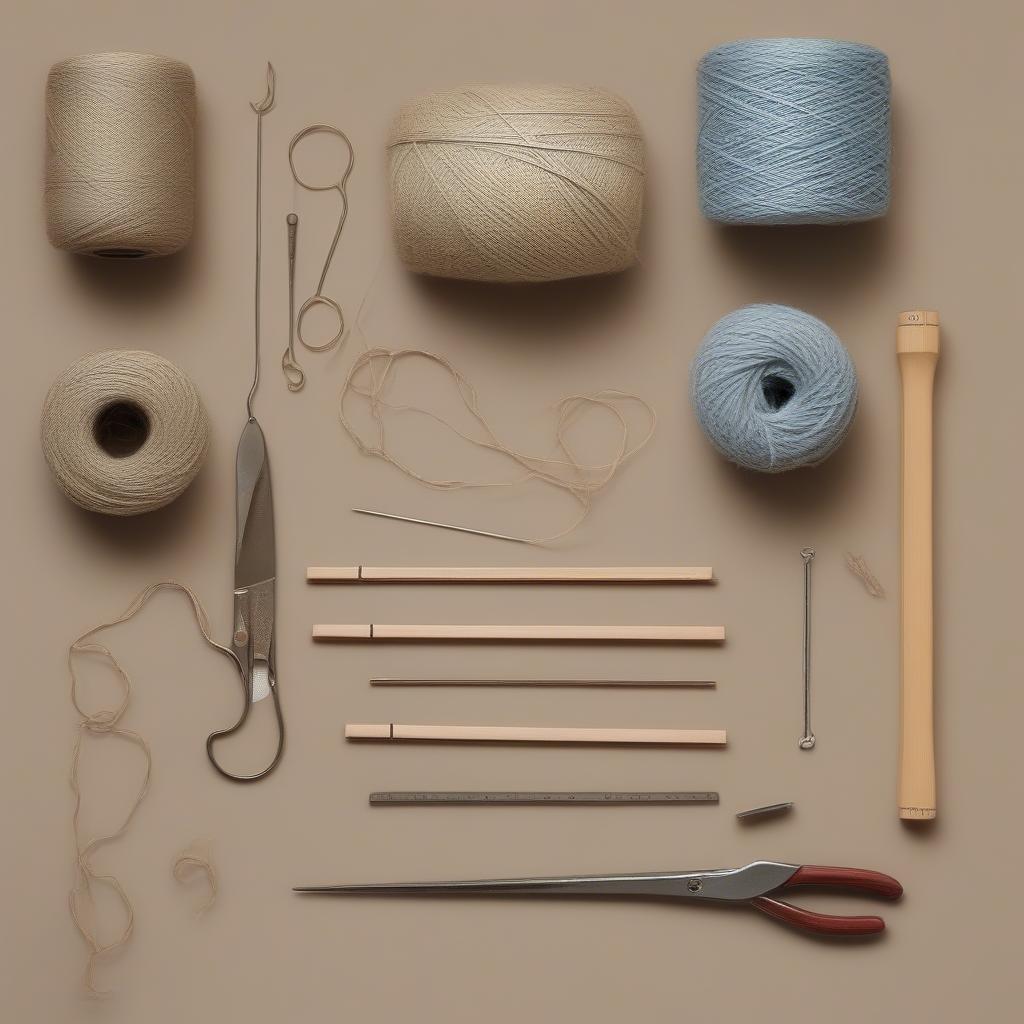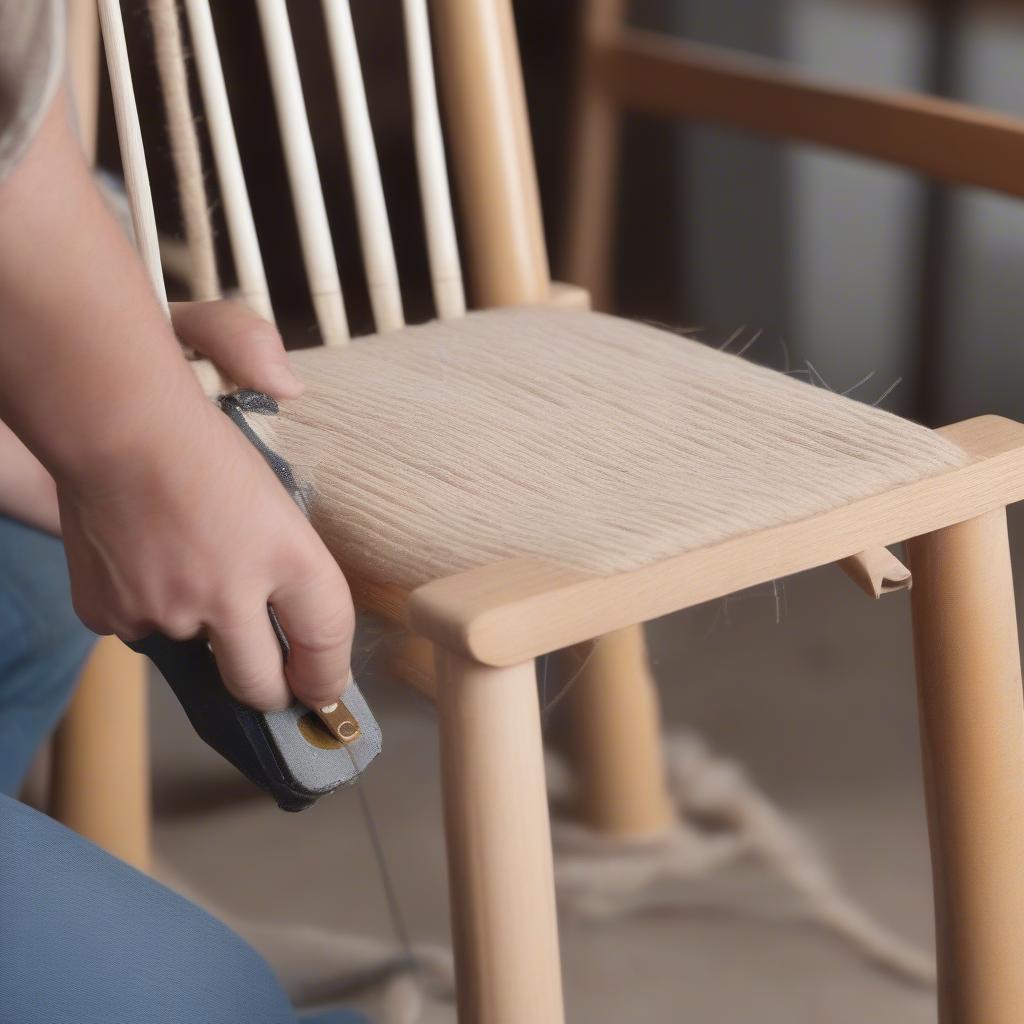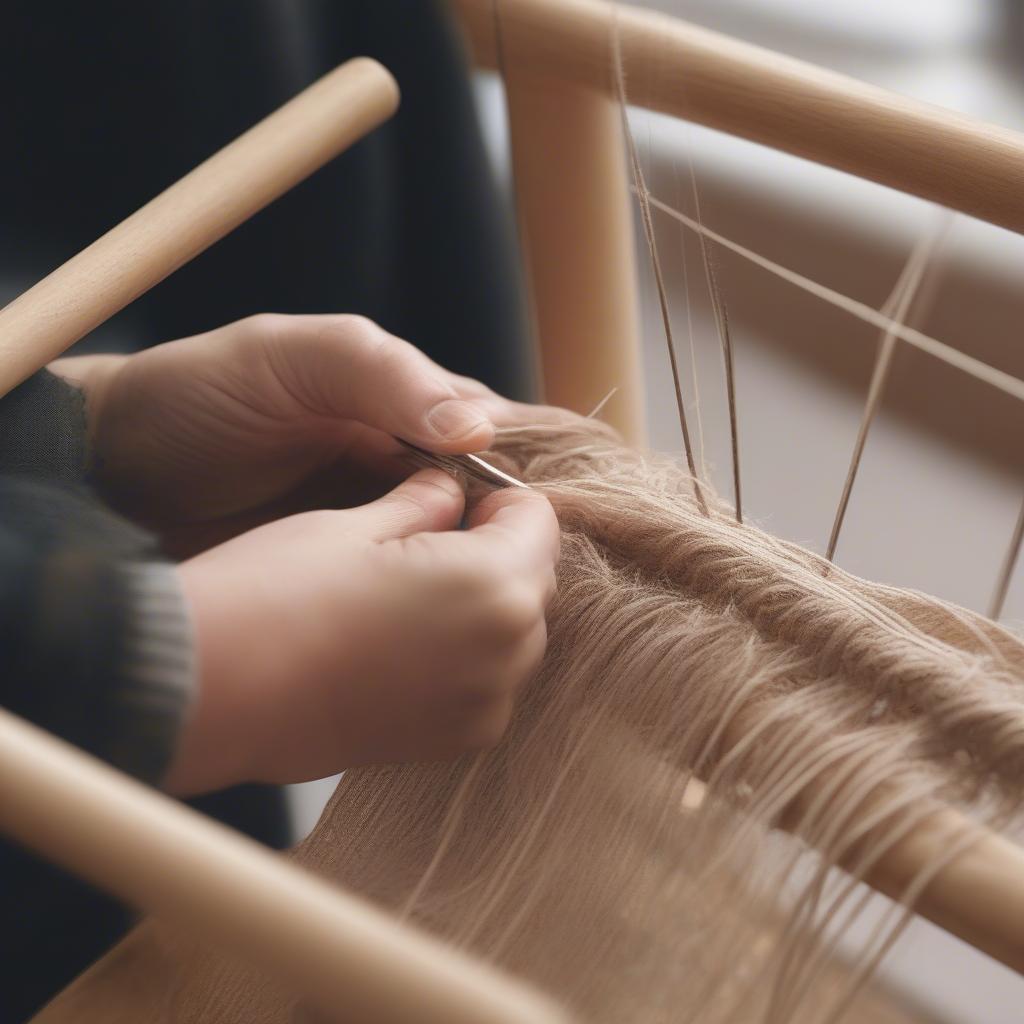Weave Chair
How to Weave a Chair Seat with Twine
Learning How To Weave A Chair Seat With Twine is a rewarding skill that allows you to breathe new life into old furniture or add a unique touch to a new piece. This guide will provide you with a step-by-step approach, from choosing the right materials to mastering different weaving patterns, empowering you to create a beautiful and functional chair seat.  Preparing materials for weaving a chair seat with twine
Preparing materials for weaving a chair seat with twine
Choosing the Right Twine for Your Chair Seat
Selecting the appropriate twine is crucial for the durability and aesthetic appeal of your finished chair seat. Consider the thickness, material, and color of the twine to ensure it complements your chair frame and withstands regular use. Natural fibers like jute, sisal, and cotton offer a rustic charm, while synthetic twines like nylon or polypropylene provide increased strength and weather resistance.
Types of Twine
- Jute: A strong, biodegradable option with a natural, earthy tone.
- Sisal: A durable, water-resistant fiber ideal for outdoor furniture.
- Cotton: A soft, comfortable choice available in various colors.
- Nylon: A strong, synthetic twine resistant to abrasion and mildew.
- Polypropylene: Another synthetic option, known for its strength and UV resistance.
Preparing Your Chair Frame
Before you begin weaving, ensure your chair frame is clean, stable, and free of any loose debris. If working with an old frame, sand down any rough edges and reinforce any weak joints. A sturdy frame will provide the necessary support for your woven seat.  A chair frame being prepared for twine weaving.
A chair frame being prepared for twine weaving.
Weaving Techniques for Chair Seats
Several weaving techniques can be used to create a variety of patterns and textures. Here are a few popular options:
Basic Weaving Pattern
This simple pattern involves weaving the twine over and under the frame rails in a consistent pattern, creating a classic woven look. It’s an excellent starting point for beginners.
Basketweave Pattern
This technique creates a checkerboard pattern by weaving the twine over and under two rails at a time. It adds visual interest and texture to the seat.
Danish Cord Weaving
This intricate technique involves creating a continuous loop of cord around the frame rails, resulting in a strong and supportive seat.
Step-by-Step Guide: How to Weave a Chair Seat with Twine (Basic Weave)
-
Measure and Cut: Measure the length and width of your chair seat and cut enough twine to cover the area multiple times, allowing for extra length for knotting.
-
Warping the Frame: Begin by creating the warp, which are the vertical strands of twine that run from front to back on the chair frame. Securely tie the end of the twine to one of the front rails. Then, stretch the twine tightly across to the back rail and tie it off. Repeat this process until you have evenly spaced warp strands across the frame.
-
Weaving the Weft: The weft is the horizontal twine that is woven over and under the warp strands. Starting at one side, weave the twine over and under each warp strand. Once you reach the end, turn the twine around and weave back in the opposite direction, ensuring you alternate the over-under pattern.
-
Securing the Ends: Once you have completed the weaving, securely tie off the ends of the weft twine to the frame rails. Trim any excess twine.
“A well-chosen twine and proper weaving technique are essential for creating a chair seat that is both beautiful and functional,” says Sarah Miller, a renowned furniture restorer and weaving expert. weaving a chair seat with twine
Tips for a Successful Weaving Project
- Maintain Consistent Tension: Keep the twine taut throughout the weaving process to ensure a strong and even seat.
- Use a Weaving Needle: A weaving needle can help you navigate the twine through the warp strands more easily, especially with intricate patterns.
- Practice on a Small Frame: If you’re new to weaving, practice on a smaller frame before tackling a chair seat.
 Using a weaving needle to weave a chair seat with twine.
Using a weaving needle to weave a chair seat with twine.
Conclusion
Weaving a chair seat with twine allows you to personalize your furniture and create a unique piece that showcases your craftsmanship. By following these steps and tips, you can confidently transform an old chair or add a touch of handmade charm to a new one. So, gather your materials, choose your favorite weaving pattern, and enjoy the process of how to weave a chair seat with twine!
“Remember, patience and practice are key to mastering any new craft,” adds John Carter, a master weaver with over 20 years of experience. “Don’t be afraid to experiment with different twines and patterns to find what works best for you.” weaving a chair seat with twine
FAQ
- What type of twine is best for outdoor chair seats?
- Can I use rope instead of twine for weaving a chair seat?
- How do I fix a broken strand in my woven chair seat?
- What are some advanced weaving patterns I can try?
- How do I clean a woven chair seat?
- Where can I buy high-quality twine for chair seat weaving?
- How much twine do I need to weave a standard chair seat?
Need more help? Contact our Hotline: +84 388 951 999, address: Hanoi, Vietnam or Tech Avenue, Suite 12, San Francisco, CA 94105, USA. We have a 24/7 customer service team.
